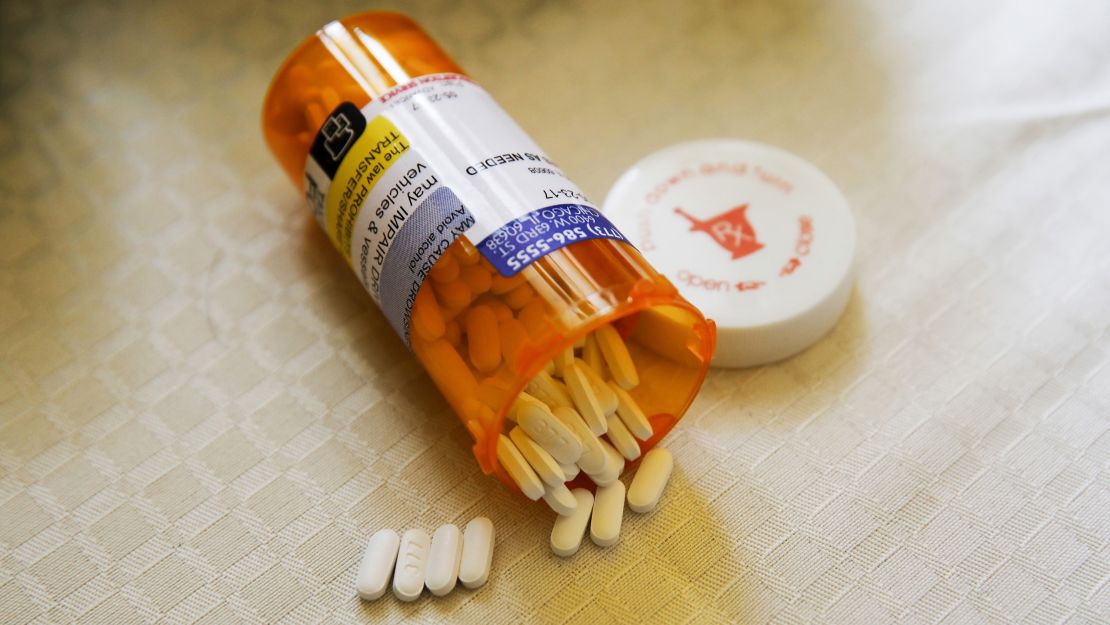Story highlights
Cannabis was the most widely used drug in 2016
Drug use among those age 40 and above is increasing at a faster rate than younger demographics
Cocaine supplies and heroin seizures have hit a record high, a new report finds.
Supplies of cocaine in 2016 andopiumfrom 2016 to 2017 hit their highest ever recorded levels, according to the 2018 World Drug report released by the United Nations Office on Drugs and Crime (UNODC) on Tuesday.
Non-medical use of prescription drugs such as fentanyl, are also becoming a major threat to public health, increasingly contributing to overdose deaths, particularly in the United States.
Globally, deaths from drug use reached an estimated 450,000 in 2015. Nearly 40% of those deaths resulted from the direct result of drug use – primarily overdoses from opioids. The remaining 60% of those deaths were attributable to the indirect use of drugs, such as HIV and Hepatitis C obtained from unsafe injections.
The report also found that fentanyl and its analogues remain particularly problematic in the United Statesand Canada, while the use of non-medical tramadol – another type of opioid painkiller – is increasing in Asia and “soaring in parts of Africa,” the report finds.

“Drug markets are expanding, with cocaine and opium production hitting absolute record highs, presenting multiple challenges on multiple fronts,” said UNODC Executive Director Yury Fedotov in a statement.
“The real problematic issues for us have been the increase in opium production in Afghanistan and the massive increase in cocaine production, particularly because of Colombia,” added Thomas Pietschmann, a drug research expert at the UNODC, and one of the lead authors of the report.
Drug consumption rising among baby boomers
Around 275 million people worldwide aged 15-64 years used drugs at least once in 2016 – the latest year for which data is available.

Cannabis was the most widely used drug, with 192 million users, followed by opioids and amphetamines with 32 million users each, according to the report.
Surprisingly, drug use among older generations – those age 40 and above – is increasing at a faster rate than younger demographics.In the US, drug use among those 50 and older increased seven times between 1996 and 2016, said Pietschmann.
“Baby boomers are getting older and continuing to take drugs. We see this in Europe, the US, South America and Australia,” said Pietschmann, adding that they are not on the radar of mostauthorities worldwidelooking at drug use.
The report also found that women – accounting for 33% of drug users – consume far less than men. However, once women begin consuming, they are much more likely to become drug dependent than men,the report says.
Aiding suppliers
Tramadol has has been linked to various terrorist networks in the Middle East and has been a cause of both increasing addiction and instability in Africa, the report says.
India has been a major supplier of tramadol, and recent control measures in the country should reduce the total global supply, according to Pietschmann.

“Hopefully it should become much less prevalent than in the past. There is some temporary hope when it comes to tramadol,” said Pietschmann.
However, curtailing supplies of cocaine and heroin is much more complicated. In 2016 an estimated 1,410 tons of cocaine were produced globally, the highest ever level reported. And between 2016 and 2017 globalopium production jumped to 10,500 tons, the most amount of ever recorded by the UNODC.
Insecurity in both Colombia and Afghanistan has, in large part, driven the record-setting supplies of cocaine and heroin, as deteriorating economic conditions have incentivized the profitable substitution of coca and poppy plants for traditional and less remunerative crops, according to Alexander Soderholm, Policy Coordinator at the London School of Economics International Drug Policy Unit. He was not involved in the report.
“Drug markets provide the only alternatives for farmers in environments where few viable alternatives exist,” said Soderholm.
Tackling big increases in drug supplies requires large-scale alternative development policies. For example, governments can offer farmers profitable livelihood options outside of illicit drug cultivation, said Pietschmann.
But Soderholm fears the spike in cocaine and heroin supplies will be used as justification for governments “togo back to the traditional, heavy, military-lead interventions that we know simply don’t work.”
Ongoing epidemic in the US
The ongoing opioid crisis in the US also remains a pivotal issue. It has helped drive the increase in drug deaths since 2000, according to Pietschmann. “We are talking about 64,000 people dying in 2016 from drugs,” he said.
The US is opioid epidemic has caused widespread overdose deaths and contributed to the declining average age of Americans in both 2015 and 2016.
Many of the overdose deaths resulted from consuming fentanyl, a synthetic opioid that will likely become more pervasive worldwide, said Soderholm.
Poor solutions
Health services and drug treatment still fall well below what is needed, as only one out of six people with a drug disorder receives treatment, according to the report.
“We need ongoing improvement of prevention and treatment. It is there, but only a small proportion of people that need treatment get treatment. This has been an ongoing problem and it’s still there,” said Pietschmann.
Only 79 countries have both a needle and syringe program as well as opioid substitution therapy – such as the use of methadone to treat opioid addiction – and only four of those countries had high coverage for both kinds of intervention, the report says.
The report not only calls for more treatment, but for treatment that is aligned to the particular needs of older users as well as women – whose drug use differs from that of men. Women are much more likely to increase the rate they consume drugs much faster than men, according to the report.
Further monitoring and research on treatment is also required to better understand what programs function best.
Join the conversation
But we are in an era where anyone with reasonable chemistry skills – or anyone enterprising enough – can produce drugs in their basement or kitchen, and new unlisted fentanyl analogues can be manufactured almost instantaneously, according to Soderholm. “What we need are more radical solutions,” he said.
Soderholm believes the decriminalization of the possession and personal use of drugs, which would reduce the social and economic costs of massive incarceration and free up more resources to be invested into treatment and prevention, are a few steps in the right direction.


